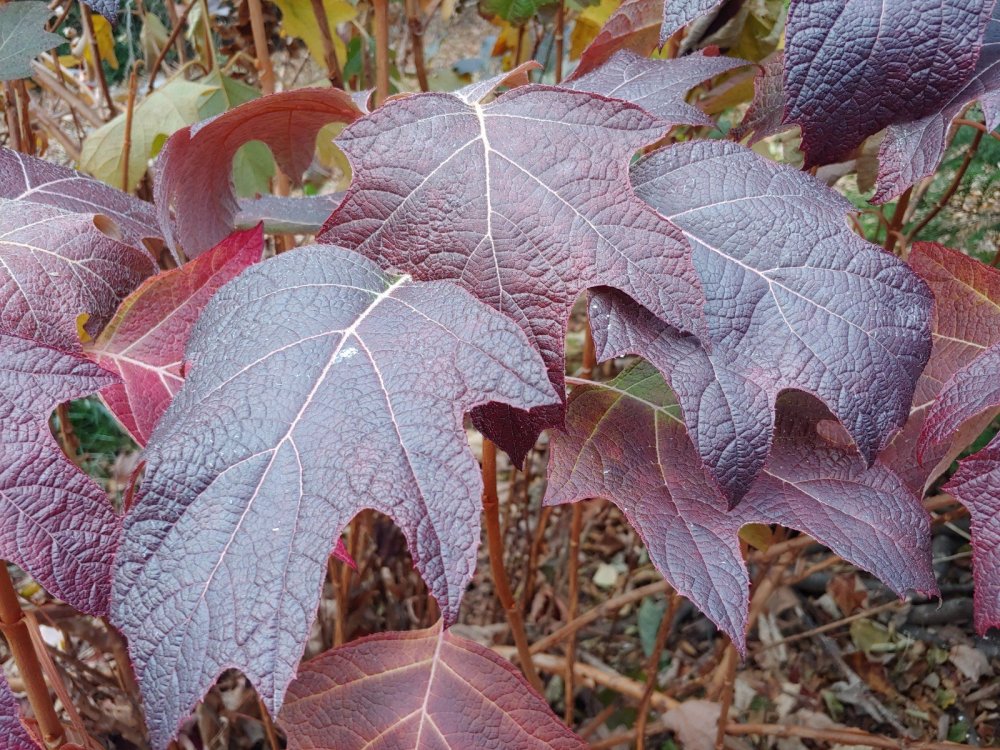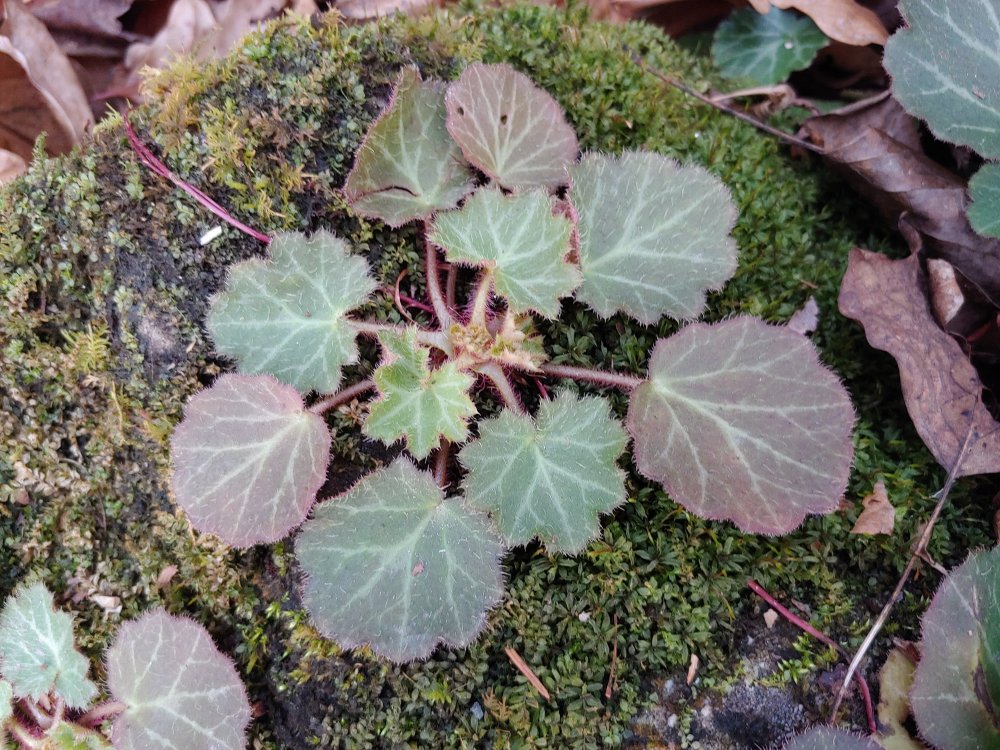The family gathered around the firepit beside the koi pond on a mild Thanksgiving afternoon as sunlight faded. Logs of the aged variegated redbud (Cercis canadensis ‘Silver Cloud’) that was cut down a year ago after the weakly rooted and top heavy tree leaned to touch the ground burned brightly as we scooted chairs back to escape the heat. My octogenarian mother, who visits rarely (we visit her), gasped looking over her shoulder at the large, burgundy leaves of the wide spreading Oakleaf hydrangea (Hydrangea quercifolia, below) that grows far over what was once constructed as a seating wall.

There are a variety of Oakleaf cultivars scattered about in sun and shade in the garden, and most display darkly colored leaves in autumn. Flowering is diminished in heavier shade, though the number of blooms is acceptable, and the foliage justifies their inclusion even in less than ideal settings. The yellow leafed Oakleaf, ‘Little Honey’ does not flower at all in this shade, but it was moved from a half sunny spot where it flowered but leaves burned in the summer sun. It grows now with renewed vigor, with unblemished, soft yellow leaves. Foliage of ‘Little Honey’ does not color in autumn, but even without flowers its foliage justifies its place. Still, all other Oakleafs outperform ‘Little Honey’, so I would not plant another.

Earlier in the year I planted several variegated spurges (Euphorbia x martinii ‘Ascot Rainbow’, above) that had failed in previous attempts, but as I considered the purchase I recalled that all were likely to have been planted in areas with ill suited, damp soil. All recent plantings (and more spurges) are now high and dry, adding a bright splash of yellow, but after multiple freezes I note a softening in color that is most pleasing. Regrettably, my vision is color deficient to the degree that I hesitate to describe the change, but the more muted color better suits the winter garden.

Creeping saxifrage (Strawberry begonia, Saxifraga stolonifera, above growing onto a mossy stone at the stream’s edge) has filled wonderfully along the shaded stream where it thrives with borrowed moisture. Transplants have been taken where it has become too vigorous, and all are too young to grow so quickly, but with no irrigation except rain these clumps are unlikely to spread so vigorously.
I love your shots of the beautiful leaves of your plants. I am trying to buy the plants that you feature, so I , too, can have a diverse garden. I have a question for you: do you by any chance have experience with planting a Ukigumo Japanese Maple? I just bought a beautiful 20-year old one and I can’t decide where to place it in my yard—100% shade, or morning sun with afternoon shade? Sorry to be off topic.
Your question is very much on topic. Where is ‘Ukigumo’ happiest? This is my favorite Japanese maple after seeing trees growing in Oregon, but I have been less successful growing it to display its best color. I’ve planted two, one in half sun and the other in full shade. Both grow, but foliage color is muted. I don’t know if this is due to sunlight exposure or humidity related warm nights that stress ‘Ukigumo’. I am considering digging the smaller of the two to move it into a large pot so I can move it around until I get the right color.
So, I am certain that ‘Ukigumo’ requires shade , but I’m uncertain to what degree or if it will ever color ideally in this area. The best bet is planting with a few hours of sun, preferably morning sun.
Thanks very much!! I’ll put the Ukigumo in a sheltered place against my back fence with 3 hours of morning shade and full afternoon shade. Thanks.
Beautiful leaves – they’re an inspiration! 🙂